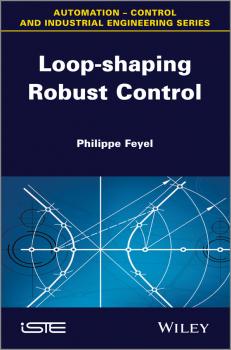ТОП просматриваемых книг сайта:
Philippe Feyel
Список книг автора Philippe FeyelАннотация
In the automotive industry, a Control Engineer must design a unique control law that is then tested and validated on a single prototype with a level of reliability high enough to to meet a number of complex specifications on various systems. In order to do this, the Engineer uses an experimental iterative process (Trial and Error phase) which relies heavily on his or her experience. This book looks to optimise the methods for synthesising servo controllers ny making them more direct and thus quicker to design. This is achieved by calculating a final controller to directly tackle the high-end system specs.
Аннотация
The loop-shaping approach consists of obtaining a specification in relation to the open loop of the control from specifications regarding various closed loop transfers, because it is easier to work on a single transfer (in addition to the open loop) than on a multitude of transfers (various loopings such as set point/error, disturbance/error, disturbance/control, etc.). The simplicity and flexibility of the approach make it very well adapted to the industrial context. This book presents the loop-shaping approach in its entirety, starting with the declension of high-level specifications into a loop-shaping specification. It then shows how it is possible to fully integrate this approach for the calculation of robust and efficient correctors with the help of existing techniques, which have already been industrially tried and tested, such as H-infinity synthesis. The concept of a gap metric (or distance between models) is also presented along with its connection with the prime factors of a set of systems shaping a ball of models, as well as its connections with robust synthesis by loop-shaping, in order to calculate efficient and robust correctors. As H-infinity loop-shaping is often demanding in terms of the order of correctors, the author also looks at loop-shaping synthesis under an ordering constraint. Two further promising lines of research are presented, one using stochastic optimization, and the other non-smooth optimization. Finally, the book introduces the concept of correction with two degrees of freedom via the formalism of prime factorization. Avenues for future work are also opened up by the author as he discusses the main drawbacks to loop-shaping synthesis, and how these issues can be solved using modern optimization techniques in an increasingly competitive industrial context, in accordance with ever more complex sets of functional specifications, associated with increasingly broad conditions of usage. Contents Introduction 1. The Loop-shaping Approach 2. Loop-shaping H-infinity Synthesis 3. Two Degrees-of-Freedom Controllers 4. Extensions and Optimizations Appendix 1. Demonstrative Elements on the Optimization of Robust Stabilization with Order Constraint Appendix 2. Establishment of Real LMIs for the Quasi-Convex Problem of Optimization of the Weighting Functions About the Authors Philippe Feyel is an R&D Engineer for the high-tech company Sagem Défense Sécurité, part of the defence and security business of the SAFRAN group, in Paris, France.


